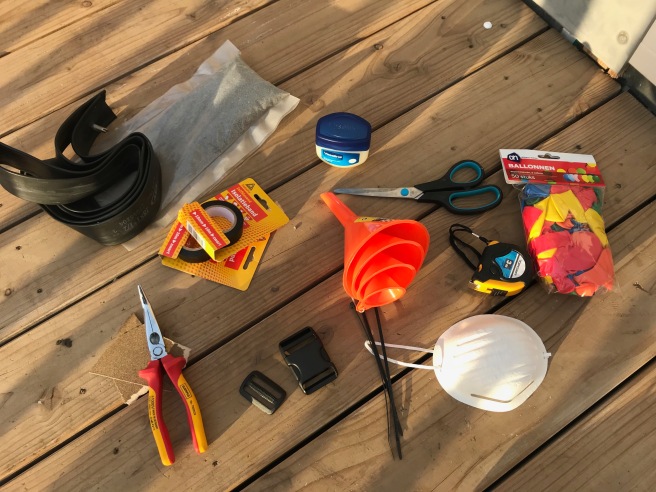As readers of this blog know, my challenge as a beginner freediver has mainly been equalization. This is nothing out of the ordinary as many beginners, scuba- and freedivers alike, struggle with this when they start out exploring the world beneath the water’s surface.
There is good news however and I’m the living proof of it: practice will help you!
If you’re new to this blog and don’t know what troubles I had with equalization, you can read all about it (and how to go about solving equalization issues) in previous posts on this blog. In short: I came from a place where I wasn’t able to equalize at all when diving with my head down.
I started reading about and practicing the Frenzel method for equalization (read more here). I did loads of dry training and to test my progress I went to a 5 meter deep pool every single Monday evening.
As promised before, here is a vid of one of those sessions:
It might seem we are mainly having fun, senselessly blowing bubbles. However, as I said before and probably so in slightly different words: relaxing and having fun is paramount to progress. And let me assure you, we definitely did practice equalization, a lot!
BUT… Of course I wanted to be sure the improvement in my equalization skills was not a fluke. And preferably so before the forthcoming 29th of March. That’s when I’ll be going to Germany again with World Record holder and Freedive instructor Nanja van den Broek to do my re-examination for the SSI Level 1 Freediver certificate. So… how to go about that? How to make sure I can equalize comfortably to the required depth and not go to Germany to be purely decorative again?
My initial idea was to go to the same pool in Germany where we did the deep diving part of the level 1 course (Dive4Life) and where I’d also be doing the re-exam. A great plan A! There I would be able to go deeper than 5 meters, even past the minimum of 10 meters and so be sure. Unfortunately there was just a small, tiny, itty-bitty, little problem…
I called Dive4Life to check if it was possible for me and my buddies to dive there in the near future. I turned out you can’t dive there without at least a level 1 certification. Even if you have two buddies with you that do. Even though I was (and am) bummed out, I must say: props for the strict safety standards they adhere to!
A great plan A doesn’t need a plan B, right? Wrong! Except… I didn’t have one. After discussing this impediment with the buddies that would join me, we decided to send Nanja an e-mail for tips. Turns out she has some good connections at DiveWorld in Enschede, a town in the East of the Netherlands, very near the German border, where they also have a dive tower. There, Nanja said, we’d be able to train with the three of us even with me being a “pool freediver” (already).
I gave DiveWorld a call and told them about our plan and situation. We were more than welcome. And Nanja’s name definitely carries some power! The DiveWorld pool has 10 meters of depth which isn’t as deep as Dive4Life in Germany, but it would definitely be deep enough to get some certainty about the state of equalization affairs.
I texted my two buddies and we decided on a date to go training. But let me not keep you in suspense any longer. It was pretty amazing and exceeded all my expectations! I had no trouble equalizing, we had fun, practiced some rescue dives and other drills for the level 1 certificate. I will truly go to Germany with great confidence. That’s what is was all about after all… and this awesome vid of the day of course(!):
Karamba! Keep you guys posted!






 Last Thursday I took the car and drove there. Walking towards the locker rooms I saw some old fellas (and obviously one grandson) snorkelling in the diving pool. Yes(!), I thought, this means I can go in there (for the website of the swimming complex mentioned the diving pool was usually not open to the public). Once changed into my swimming shorts I immediately entered the area of de diving pool and started going about my business, legs hanging on the edge of the pool and pushing my head down to practice the upside down equalization (slowly). When I managed to do so in this position I let my legs go to slowly drift down to the bottom, meanwhile trying to keep equalizing. Unfortunately I only managed to get half way.
Last Thursday I took the car and drove there. Walking towards the locker rooms I saw some old fellas (and obviously one grandson) snorkelling in the diving pool. Yes(!), I thought, this means I can go in there (for the website of the swimming complex mentioned the diving pool was usually not open to the public). Once changed into my swimming shorts I immediately entered the area of de diving pool and started going about my business, legs hanging on the edge of the pool and pushing my head down to practice the upside down equalization (slowly). When I managed to do so in this position I let my legs go to slowly drift down to the bottom, meanwhile trying to keep equalizing. Unfortunately I only managed to get half way.